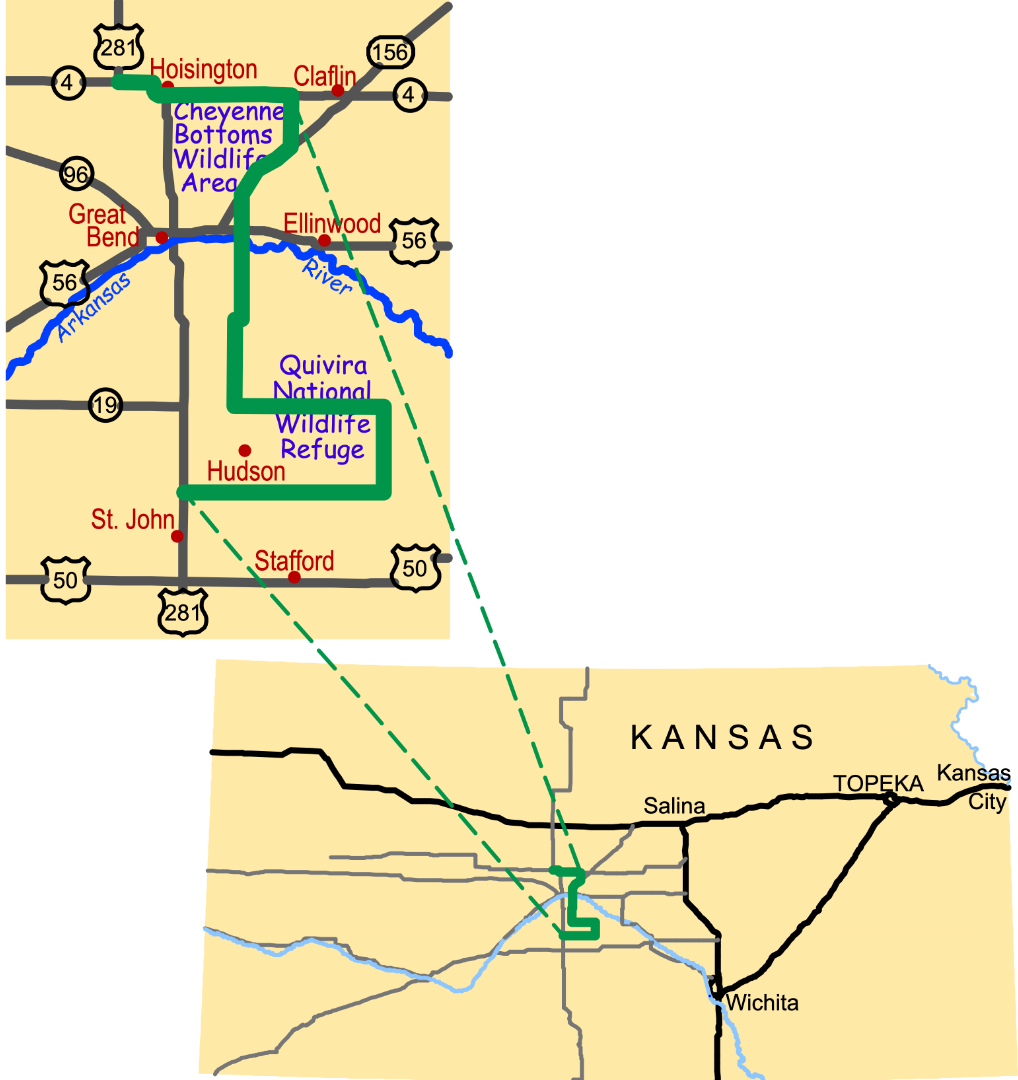Working...

Settling the "Great American Desert"
Zebulon Pike's Legacy
Near midnight, on October 13, 1806, Lieutenant Zebulon Pike and his exploring party, headed to the Rockies, reached the Arkansas River just southwest of Great Bend. The explorers camped by the river for two weeks to rest their animals and lay in a supply of meat. Pike's published expedition reports strongly influenced public opinion about this region. He described the Great Plains as "incapable of cultivation," best left "to the wandering and uncivilized aborigines of the country." Later explorers echoed his claims, and the Plains became known in the mid-1800's as the "Great American Desert" labeled on a map by Major Stephen Long.
Though Pike's descriptions discouraged settlement here for more than fifty years, his explorations spurred on the opening of the Santa Fe Trail in 1821. The Trail brought thousands of settlers through this area during the mid-1800s. By 1870, settlers had discovered that crops could, indeed, prosper here. In 1872, rail service reached this county, and settlers flooded in to begin a new life.
Early Barton County Settlers*
"We raised onions, tomatoes, and potatoes that year [1867] near the ranch on spaded ground, they being the first vegetables ever raised in Barton County by white men. We had rains enough to keep them in good growing condition, and they matured of good size and shape."
-Homer H. Kidder of Great Bend, from Biographical History of Barton County, Kansas, 1912.
Desert Rose
... "The spring [of 1872] opened very fine, and the prairie schooners carrying settlers came in very fast... Considerable land was broken and planted to corn, etc., and the desert, which has since developed into a full blown rose, began to bud.
-Ed W. Dewey, from Biographical History of Barton County, Kansas, 1912.
Motion and Change
Like sailing ships on the ocean, fleets of canvas-topped wagons carried settlers over the plains to Barton County. A lighter version of the massive Conestoga wagons that hauled freight on the Santa Fe Trail, the Prairie Schooner was the wagon of choice for many of the region's settlers.
Download the interpretive panel: Settling the "Great American Desert" Panel located in the Claflin City Park.
To listen to more information click on the Audio Tour
Go to the Gallery to view photographs contributed by visitors to the Byway.
* Early Barton County Settlers
Written accounts from early settlers in the Byway region offer a glimpse of their lives on the newly settled prairie frontier:
"[In 1871, with] winter coming on, I made a dugout on the banks of the Walnut, on my land, and my family cattle about the 16th of November. The next day it began to rain and sleet, finally turning to snow. Our things had not yet arrived, and we were compelled to sleep on some old hay in one corner of the dugout. The rain and snow beat in at the door. It became terribly cold before morning, and we came near freezing to death. The creek froze nearly solid. As the winter progressed the wolves and coyotes became very savage, and it was dangerous for a person to be out on the prairie after dark."
-Ed. W. Dewey, from Biographical History of Barton County, Kansas, 1912.
"The Walnut Creek valley extends its width and mingles its matchless soil with the Arkansas Valley, where in rich profusion may be seen the alfalfa, corn and wheat fields. The endless fields of grain are so blended that the road ways can only be marked by the fringes of trees that embellish the country with flamboyant denial that this could ever have been the great American desert."
-John F. Lewis, Biographical Sketch of Barton County, 1912
More Movement pages...
People of the Plains
Illusive Cities of Gold
Wild West Superhighway



